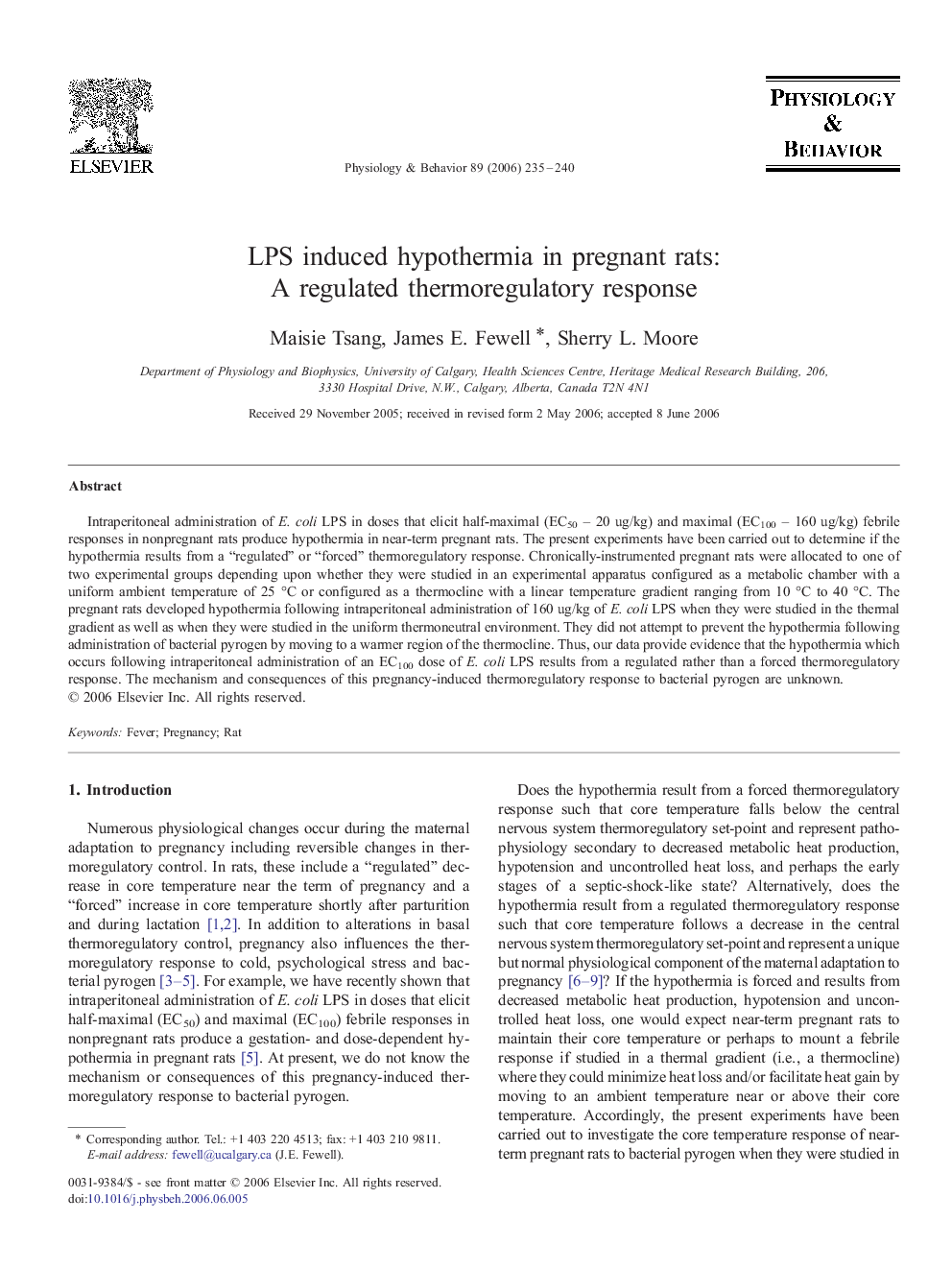| Article ID | Journal | Published Year | Pages | File Type |
|---|---|---|---|---|
| 2846290 | Physiology & Behavior | 2006 | 6 Pages |
Abstract
Intraperitoneal administration of E. coli LPS in doses that elicit half-maximal (EC50 - 20 ug/kg) and maximal (EC100 - 160 ug/kg) febrile responses in nonpregnant rats produce hypothermia in near-term pregnant rats. The present experiments have been carried out to determine if the hypothermia results from a “regulated” or “forced” thermoregulatory response. Chronically-instrumented pregnant rats were allocated to one of two experimental groups depending upon whether they were studied in an experimental apparatus configured as a metabolic chamber with a uniform ambient temperature of 25 °C or configured as a thermocline with a linear temperature gradient ranging from 10 °C to 40 °C. The pregnant rats developed hypothermia following intraperitoneal administration of 160 ug/kg of E. coli LPS when they were studied in the thermal gradient as well as when they were studied in the uniform thermoneutral environment. They did not attempt to prevent the hypothermia following administration of bacterial pyrogen by moving to a warmer region of the thermocline. Thus, our data provide evidence that the hypothermia which occurs following intraperitoneal administration of an EC100 dose of E. coli LPS results from a regulated rather than a forced thermoregulatory response. The mechanism and consequences of this pregnancy-induced thermoregulatory response to bacterial pyrogen are unknown.
Related Topics
Life Sciences
Biochemistry, Genetics and Molecular Biology
Physiology
Authors
Maisie Tsang, James E. Fewell, Sherry L. Moore,
